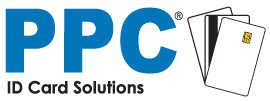If you are considering printing ID cards, you will typically be looking at contactless smart cards. Although these technologies are not new and have been in use for decades, over this time, they have filled a range of different functions.
A contactless smart card uses an embedded electronic chip capable of storing data for identification, authentication and other functions. The majority of smart cards utilise radio frequency identification (RFID) technology.
Here are three ways smart cards have been implemented:
1. Public transport
One of the industries contactless smart cards find themselves in is public transportation. Over the last four decades, public transport systems around the world have followed a similar technological trajectory.
Beginning with tokens in the 1970s, electronic magnetic strips came into use in the 1980s and since the 1990s, more sophisticated smart cards have begun to dominate this sector. Public transport providers have always looked to innovative technologies to drive customer convenience and organisational cost-saving.
From London’s Oyster to Hong Kong’s Octopus, the smart card offers a range of improvements over the strip card, such as increased security and flexibility.
2. E-money functions
In many countries, such as Japan, South Korea and Hong Kong, contactless transportation smart cards double as an e-money purse.
In Japan for instance, the Suica card stores e-money for both electronic ticket fare and buying of products. It can be used to purchase goods or services in chain stores, such as 7/11, Family Mart and Bic Camera. It can also be used on a range of vending machines dotted around the city.
The Suica is also a printed personalised ID card, which can be used as a partial form of identification.
3. Parking and tolls
If we continue with the theme of transportation, the parking sector is an avid user of RFID technology. Be it private or public parking, contactless smart cards are an excellent way to reduce costs and boost the quality of service.
Tolling has also moved towards RF-enabled transponders for cashless payments. Multi-functional smart cards such as Malaysia’s MyKad are being used to collect payments, which offer a level of convenience and efficiency that cash payments cannot.
For organisations looking into ID card solutions, printing ID badges with RFID technology is a great place to start. Their flexibility, which stems from their multi-functional design, enables users ease of access, while their increased security measures offer employers peace of mind.
Get in contact with ID card experts and find out how their expertise can improve your enterprise.


